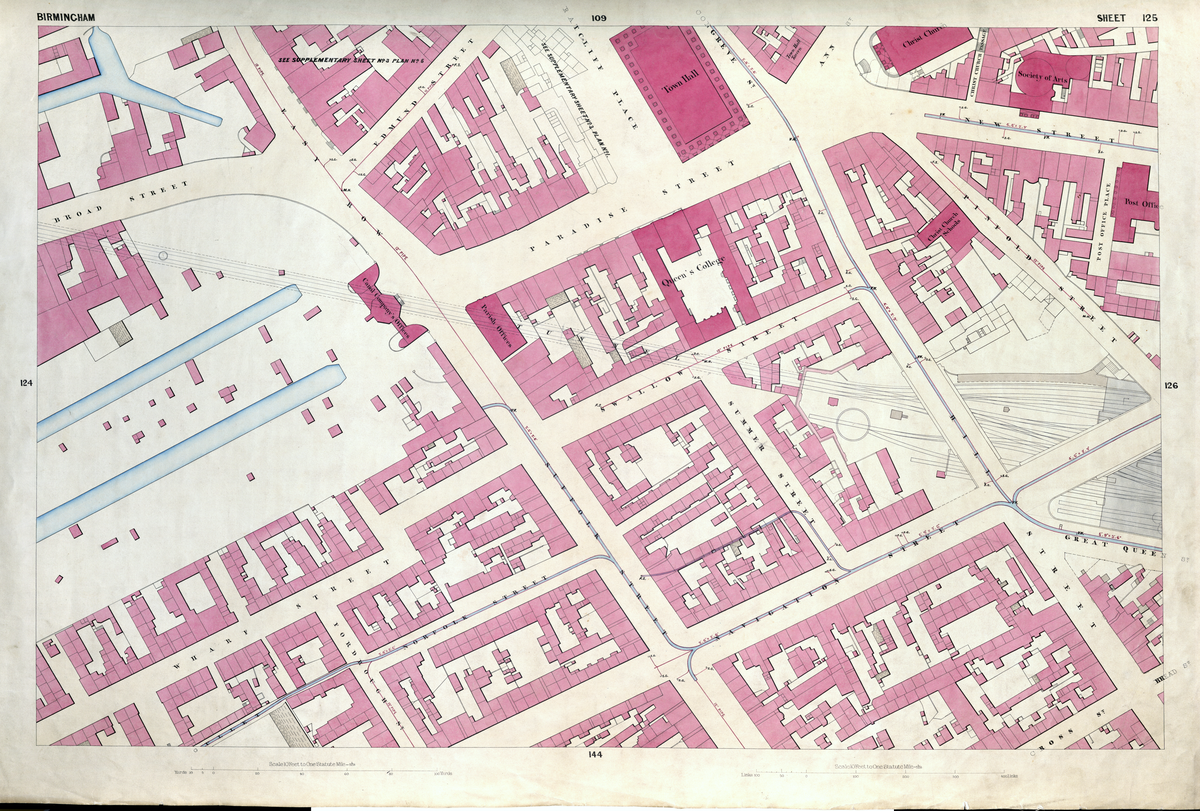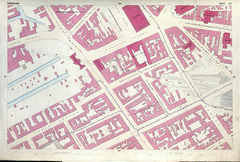
Comprehensive Guide to Visiting Queen’s College Birmingham Historical Site
Date: 14/06/2025
Introduction
Queen’s College Birmingham is a defining emblem of the city’s educational, architectural, and cultural heritage. Founded in 1825 by surgeon William Sands Cox as Birmingham’s first medical school, it became the city’s first degree-awarding institution and laid the foundation for modern higher education in Birmingham. Over nearly two centuries, it evolved from a medical school to a multi-disciplinary academic hub, eventually contributing to the creation of the University of Birmingham in 1900. Its theological department, now the Queen’s Foundation for Ecumenical Theological Education, continues to shape religious scholarship and ministerial formation in the UK.
Today, visitors can admire the preserved Victorian and Edwardian façades of Queen’s College Chambers on Paradise Street—a Grade II listed building showcasing Gothic Revival and Edwardian Baroque styles—opposite Birmingham Town Hall. While the original college building is now integrated into modern office and residential spaces, its façade remains a significant city landmark. This guide offers essential historical context, architectural highlights, practical visitor information, and tips for making the most of your trip.
For official details, consult these resources: Queen’s College Chambers website, Queen’s Foundation, and Birmingham University Heritage.
Table of Contents
- Introduction
- Historical Evolution and Academic Foundations
- Queen’s College and the Birth of the University of Birmingham
- Theological Legacy and the Queen’s Foundation
- Architectural Heritage and Urban Transformation
- Visiting Queen’s College Birmingham
- Nearby Attractions
- Tips for Tourists
- Frequently Asked Questions (FAQ)
- Conclusion and Call to Action
Historical Evolution and Academic Foundations
Queen’s College, Birmingham, was established in 1825 as The Birmingham Medical School by William Sands Cox (Wikipedia). It was the first institution in Birmingham to award degrees, initially through the University of London. The college’s mission soon expanded to encompass arts, law, engineering, architecture, and science. In 1836, it became the Birmingham Royal School of Medicine and Surgery under royal patronage, and in 1843 received its royal charter, officially becoming Queen’s College.
Philanthropic support, notably from Samuel Wilson Warneford, underpinned its Anglican foundation. The integration of Queen’s Hospital in 1841 provided practical training for medical students, and the college quickly rose to prominence as a center for academic excellence.
Queen’s College and the Birth of the University of Birmingham
By the late 19th century, internal divisions led to the separation of the medical and scientific departments, which joined Mason Science College—founded in 1875 by Josiah Mason and ultimately forming the University of Birmingham, chartered in 1900 (Birmingham University Heritage). Queen’s College’s academic traditions and faculty played a pivotal role in the new university’s development, with the Faculty of Arts remaining at the original site until the 1950s.
Theological Legacy and the Queen’s Foundation
The theological department relocated to Somerset Road, Edgbaston, in 1923, becoming the Queen’s Foundation for Ecumenical Theological Education (Wikipedia). Today, the Foundation serves the Church of England, the Methodist Church, and other denominations, offering postgraduate degrees validated by Newman University and the University of Gloucestershire. Its campus is renowned for its early 20th-century chapel and its pioneering approach to liturgical reform.
Architectural Heritage and Urban Transformation
The original Queen’s College building on Paradise Street was a striking example of Victorian architecture. In 1904, its façade was remodeled in buff-coloured terracotta and brick, reflecting Edwardian Baroque tastes (Wikipedia). While much of the complex was demolished in the 1970s, the Grade II listed façade was preserved and is now integrated into Queen’s College Chambers—a mixed-use development completed in 1976 (Queen’s College Chambers). This façade, with its Gothic windows, ornate entrance, and statue of Queen Victoria, remains a focal point of Birmingham’s architectural landscape.

Alt text: The preserved Victorian façade of Queen’s College Chambers on Paradise Street, Birmingham.
Visiting Queen’s College Birmingham
Location and Accessibility
- Address: Queen’s College Chambers, Paradise Street, Birmingham, B1 2AF (Queen’s College Chambers)
- Centrally located, within easy reach of Birmingham New Street Station and major bus and tram routes.
- The area is pedestrian-friendly and wheelchair accessible, with ramps and flat pavements.
Visiting Hours and Tickets
- Exterior viewing: The preserved façade is visible from the street at any time—no ticket or fee required.
- Interior access: The building is now private, housing offices and residences. No public interior tours are available.
Guided Tours and Virtual Experiences
- While there are no regular tours specifically for Queen’s College Chambers, city walking tours often include the Paradise Street area.
- For virtual experiences and enhanced historical context, visit the Birmingham University Heritage website.
Events and Public Lectures
- The Queen’s Foundation in Edgbaston occasionally hosts public lectures, seminars, and ecumenical events. Check the Queen’s Foundation official website for schedules and booking.
Nearby Attractions
- Birmingham Town Hall: Iconic Victorian concert venue directly opposite Queen’s College Chambers.
- Victoria Square: Hub of public art, statues, and fountains just a short walk away.
- Birmingham Museum and Art Gallery: Renowned for its art and local history exhibits.
- Library of Birmingham: A modern architectural landmark with extensive collections.
- Jewellery Quarter: Historic district with museums and working jewellers.
- Birmingham Canals: Explore the scenic canal network central to the city’s industrial past.
- Digbeth District: Known for its creative spaces, nightlife, and street art.
Tips for Tourists
- Visit during daylight hours for the best photography opportunities.
- Combine Queen’s College with a walking tour of nearby historical sites.
- Wear comfortable footwear for exploring the city center.
- Review public transport schedules in advance for seamless travel.
- For information on events and guided tours, check local heritage organizations and the Audiala app.
Frequently Asked Questions (FAQ)
Q: Can I enter the original Queen’s College building?
A: The original building is now part of a private office and residential complex; only the preserved façade is publicly accessible from the street.
Q: Are there entrance fees or tickets required?
A: No. Viewing the exterior façade is free at any time.
Q: Is the site wheelchair accessible?
A: Yes, the street and surrounding area are accessible.
Q: Are guided tours available?
A: No dedicated tours, but local walking tours often include the site.
Q: Can I attend events at the Queen’s Foundation?
A: Yes, for public lectures and events at the Edgbaston campus, check the Queen’s Foundation event calendar.
Queen’s College Foundation Campus (Edgbaston): Visiting Information
Location & Campus Highlights
- Address: Queen’s Foundation, Somerset Road, Edgbaston, Birmingham (Queen’s Foundation)
- Set in a leafy academic setting, near the University of Birmingham and accessible by rail and bus.
- Notable for its historic chapel and residential block by Holland W. Hobbiss.
Opening Hours & Access
- Open to visitors during scheduled open days, public lectures, and special events only.
- No regular daily public access; admission is free for events, often requiring advance booking.
- Accessibility is partial—ahead-of-time contact is advised for those with mobility needs.
Guided Tours
- Offered occasionally during heritage days and special events; see the events calendar for availability.
Visitor Tips
- Plan ahead and check event schedules.
- Photography inside buildings may require permission.
- Combine with nearby attractions such as the Barber Institute or Winterbourne House.
Summary and Final Tips
Queen’s College Birmingham remains a vital thread in the fabric of Birmingham’s academic and architectural identity. Though interior access is restricted, the preserved façades on Paradise Street stand as accessible, visually striking reminders of the city’s educational evolution. The Queen’s Foundation continues the institution’s legacy in theological education, serving as both a living academic community and a historical landmark in Edgbaston.
Pair your visit with other central attractions—Birmingham Town Hall, Victoria Square, the Museum and Art Gallery—for a comprehensive experience. Use resources like the Audiala app for interactive tours and maps.
For current information about events, visiting hours, and guided tours, consult official websites: Queen’s Foundation, Queen’s College Chambers, and Birmingham University Heritage.
References and Further Reading
- Queen’s College Chambers website
- Queen’s Foundation
- Birmingham University Heritage
- Historic England Listing for Queen’s College Chambers
- Wikipedia: Queen’s College, Birmingham
- Visit Birmingham Tourism
- Time Out Birmingham: Things to Do
- Audiala app





































































































